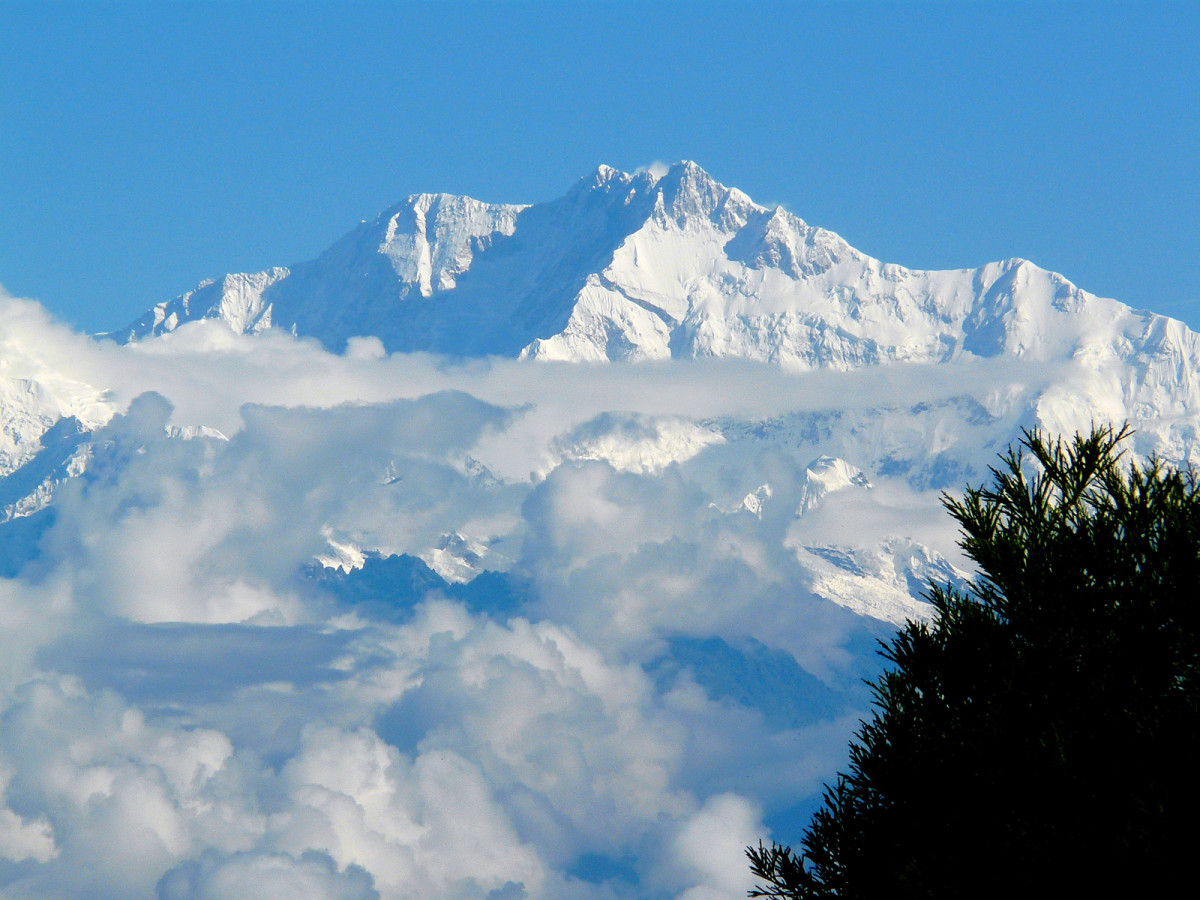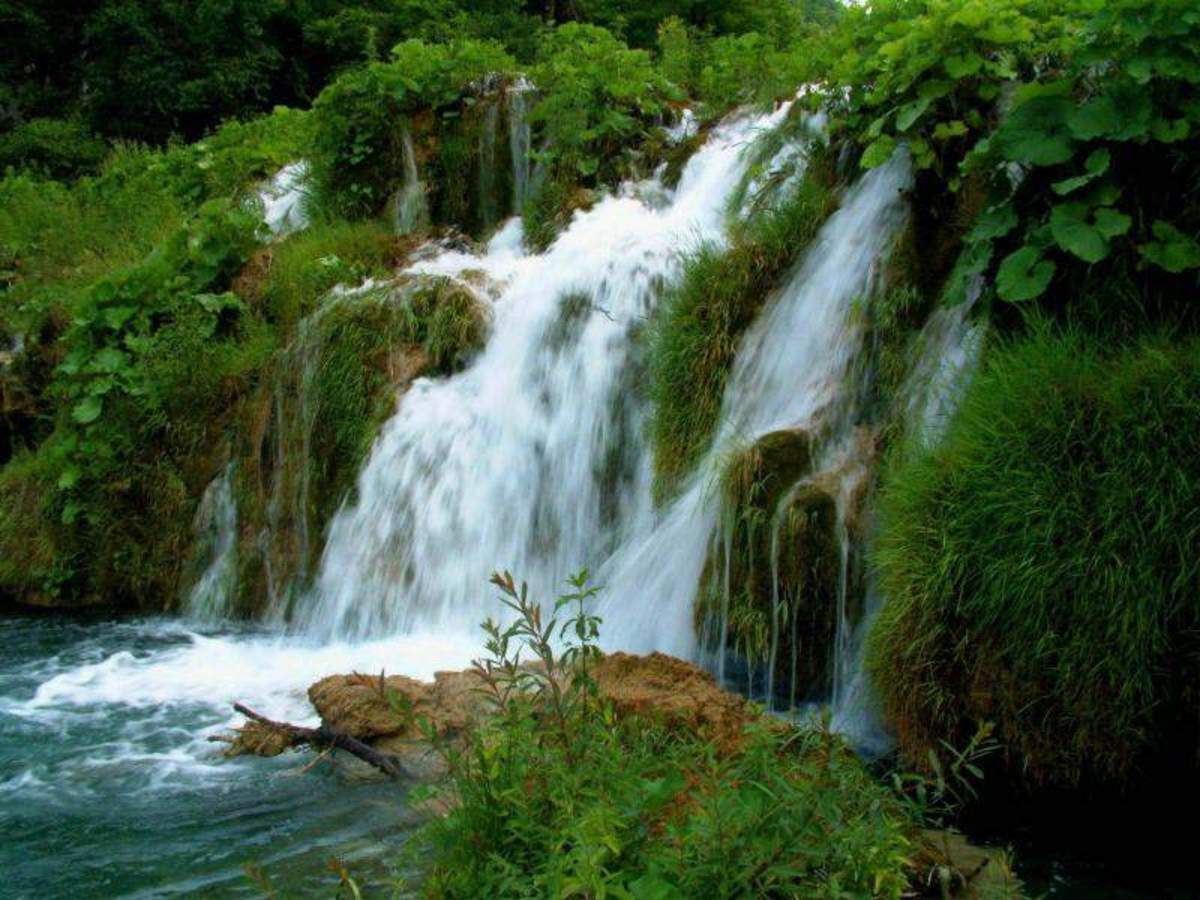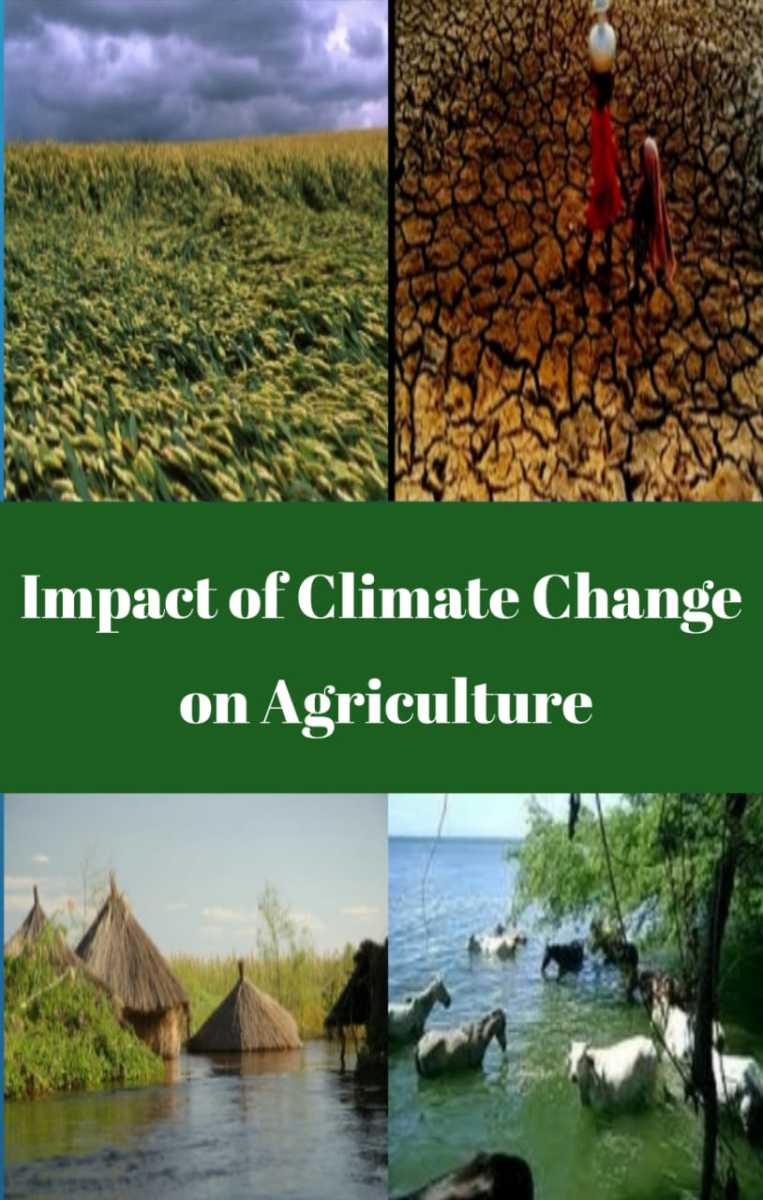Climate-Natural Vegetation-India
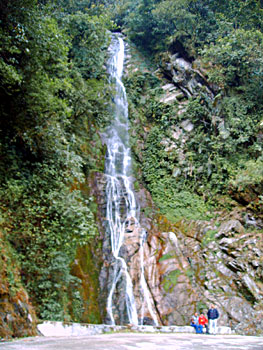
The varied physical features of India lead to the changes in the climatic conditions from region to region. Some regions are very cold whereas some are very warm. In some parts of India we find heavy rainfall, at the same time we find famines in other parts. Of course this diversity in climate has uniform feature. There is a cycle of seasons i.e., summer followed by rainy season and then winter followed by a very short spell of spring. The Indian climate can be described as 'Tropical Monsoon Type'.
Natural Vegetation has a considerable influence on the climatic, environmental and economic conditions of any country. The natural vegetation depends upon the climatic and natural zones of the globe. Different species of flora are seen in different parts of India.
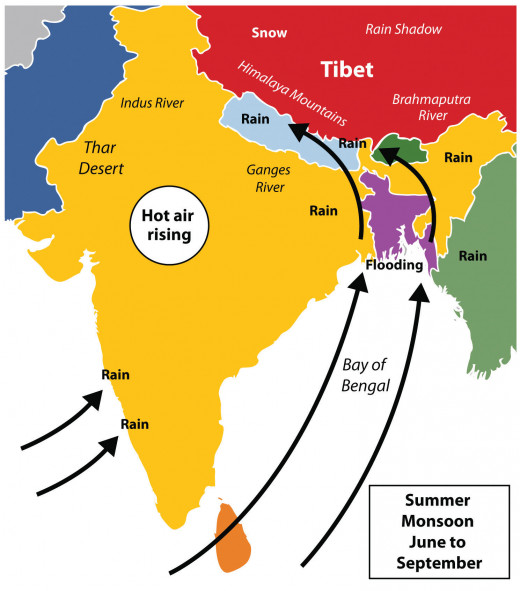
The Two Monsoons
The word 'monsoon' refers to the blowing of winds which retreat seasonally between Indian sub continent and the Indian ocean. India experiences two monsoons.
The monsoon winds are caused due to the thermal contrast between the land surface of Indian sub-continent and the adjoining seas (like Arabian sea and Bay of Bengal) of Indian Ocean.
From Mid June to Mid September the monsoon winds blow from a South - Westerly direction and it is called 'South West Monsoon' and from Mid September to Mid December they blow from North - Easterly direction and is called 'North East Monsoon'.
Mechanism of Monsoons
It starts raining from June in some parts of the country. The winds in the plains get hotter and move upwards. To take their place, winds begin to blow from the seas surrounding
South India. Mountains block their way. The winds then rise higher and the moisture therein gets cooled. Consequently there are rain bearing clouds and many parts of India receive heavy rainfall. The winds enter India from the Bay of Bengal and the Arabian Sea. The rainy season or the monsoon starts first in the south west i.e., in Kerala and Goa in early June. It is termed as 'Monsoon Burst' or 'Break'.
Low pressure system develops in the seas in the winter which draws air from the land masses particularly from the north east and therefore form the North - East Monsoon.
In this season there are rains on the East Coastal Plains of India.
Some times some parts of North West India get rains from cyclones. Cyclones in the months of November and December have become a regular phenomenon.
Distribution of Rainfall:
The distribution of rainfall is uneven in India. July and August are the months of heavy rainfall. Most parts of India receive rains during these months. Mawsynram in Meghalaya is the place of highest rainfall in India. On the other side, many areas in Rajasthan, Kutch and Jammu & Kashmir are the driest. There is no or very little rain in these places.
We can notice two significant trends in the annual distribution of rainfall. They are
1) Rainfall sharply declines from the Bay of Bengal and Odissa Coasts towards the west and north west.
2) It declines to the south towards the interior parts of the Deccan plateau from both west and east coasts.
Problems of Rainfall
Monsoons play a key role in Indian Agriculture. In our country the rains are uncertain, irregular, uneven and highly variable. Because of these conditions floods and droughts occur very frequently which hamper the agricultural development of the country and even economy.
Therefore the Indian agriculture is referred to as 'gamble in the monsoons'.
Brahmaputra valley is frequently affected by floods. On the other side there are more than 72 drought prone districts on 13 states. Many of the Telangana and Anantapur of Rayalaseema are frequently experience droughts.
Distribution of Temperature
The temperature is not even in all parts of India due to geographical variations. The summer season lasts from March to June. May is the hottest month.
In general heat in desert is intense and unbearable. The southern part of India and northern Plains are the places of hot climate. The highest temperatures are recorded in summer. The highest recorded temperature is 50º C in June and in regions of Rajasthan. The lowest is being
-40º C recorded at Dras near Kargil in December. The mean maximum temperature touches
40º C in many places of the country during summer. The mean daily minimum temperature during winter shows between 24º C to 3.8º C. The hill station in Northern India record the temperatures below the freezing point under the influence of cold waves from Central Asia.
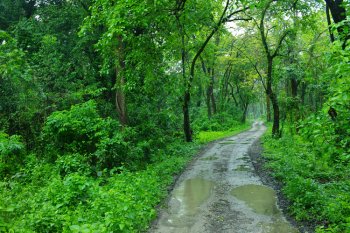
Forest Wealth of India
Trees are most valuable gifts of nature. We call them natural vegetation as they grow by themselves. Forests are the major components of our wealth. Forests are found over a large area in India. Himalayas, Western Ghats, Khasi Hills, Eastern Ghats, the Highlands of Central India etc., are the major forest areas of India.
Types of Forests:
Basically there are six types of forests in India Viz
1) Tropical wet evergreen and semi evergreen forests
2) Tropical moist deciduous forests
3) Tropical dry deciduous forests
4) Thorn forests
5) Tidal forests and
6) The Himalayan temperate and Alpine forests
Forests are generally classified into
1) Tropical Evergreen forests
2) Monsoon type of forests
3) Dry forests
4) Sundar forests (Sunderbans)
5) Coniferous forests
Importance of forest wealth
Forests are considered as very important in economic and ecological aspects in our country. There are many advantages of forests. Forests provide timber, medicinal herbs, lac, gum and many others. Forests provide shelter to birds and animals
e.g.: Sunderbans are the home of Bengal tigers. They are the basis for the rains and on the other side they stop the floods also.
As per National Forest Policy 1952, the average forest area in a country should be 33% of the total land area but in India we have around 21% land under forests. It is a serious concern. In this connection, priority must be given to the qualitative and quantitative development of the forests to protect the environment. In India Vanamahotsavs and social forestry schemes have already started. The social forestry movement encourages people to plant trees in villages and towns along the roads, railway lines and canals etc. All these will help to preserve our forest wealth.
Climate-Natural Vegetation-India
You Might Also Like
- Tropical Diseases
Disease is a conditon in which normal body functions are disturbed either temporarily or permanently. There are several stages from the time the disease causing organisms enter our body and the person becomes sick. These stages together are called 'P - Environmental Aspects
Nature provides us with everything we need to live. We use every natural resource. But are we using it economically? Human beings have become greedy towards development. - Some Environmental Problems
The growing human population has adversely affected the environment in various different ways. The demand for resources increases with the growth in population. To meet those demands, human beings never hesitate to exploit the environment.



